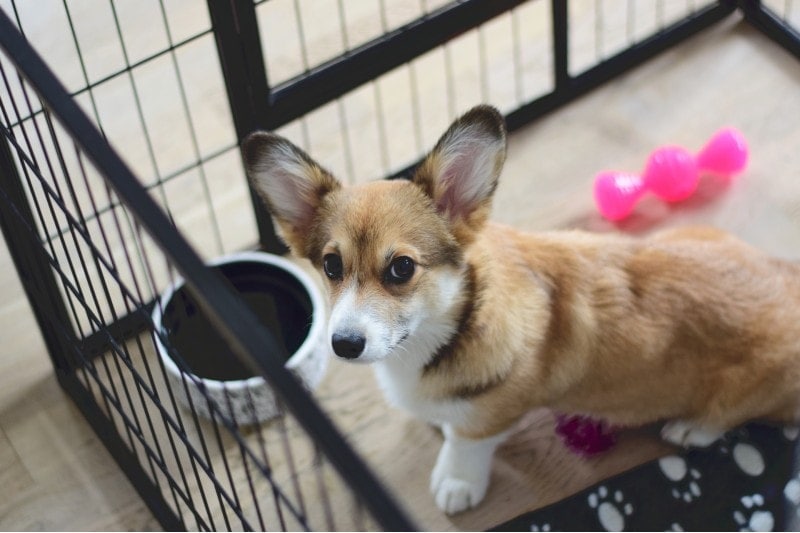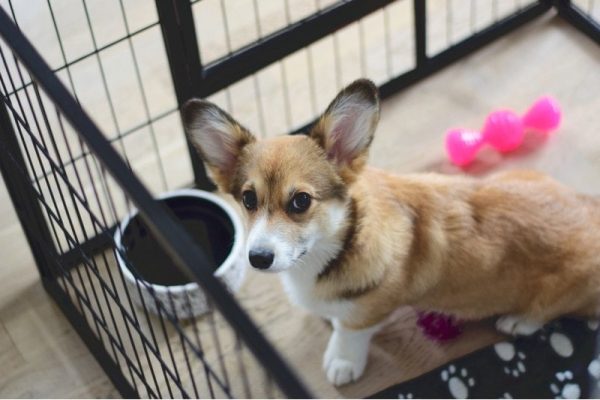As you prepare to welcome a new Corgi puppy into your home, the excitement of the big event can be overwhelming. Thankfully, corgis are much easier to train than most small breeds. Training is essential to prevent undesirable behavior, and it’s best to begin crate training as soon as your new pet enters your home. Keep reading to find six tips on how to crate train a Corgi.
The 6 Tips on How to Crate Train a Corgi
1. Choose the Right Size Crate
The first step in crate training your Corgi is choosing the right size crate. You want a small crate for your puppy to feel safe, like they’re cuddling in their little den. At the same time, the puppy needs to sit, stand, turn around, and lie down in the crate.
If your Corgi’s crate is too big, it will be ineffective as a house training tool. Puppies typically have the instinct to avoid soiling their bed, but a jumbo-sized crate gives them enough space to get away from the bed and make a mess. If you plan to keep using a crate as your puppy grows, you may need to purchase a larger model at some point.

2. Make The Crate Comfortable
Once you’ve settled on the right crate, take some time to turn it into a comfortable space for your puppy. Possible “home” decor you can add includes a bed or blanket, toys, a water bowl, and maybe a piece of clothing that smells like you. You want the crate to be an inviting place for your puppy.
If your puppy is a destructive chewer, you may need to limit the items you place in the crate for safety. Keep it simple, at least until teething time has passed. Place the crate in a quiet location close enough that your dog can feel included in the family while still having some privacy.
3. Use Treats to Lure Your Corgi into the Crate
To help your Corgi learn to use their crate, start by tossing some treats inside to help lure your puppy into entering. Praise and feed your pup more treats as they explore and hang out in their new den. This step helps your puppy learn that the crate isn’t somewhere scary but a safe space that also makes yummy treats appear! Leave the crate door open and if you see your puppy using the container on their own, be sure to offer positive reinforcement.
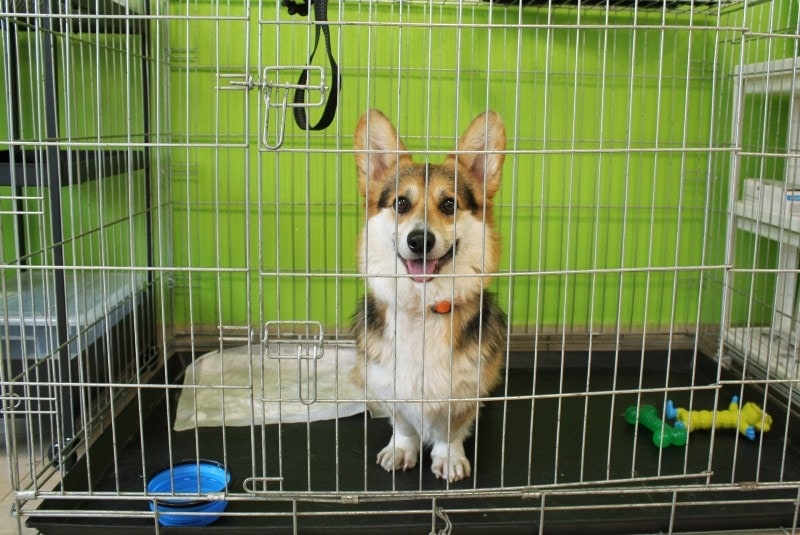
4. Teach Your Corgi a Command to Go to Their Crate
As your puppy becomes more comfortable with their crate, you can add a command to help your Corgi learn to go there when you ask. Some logical words to choose are “kennel” or “crate,” but what’s most important is consistently using whatever command you pick. Give your puppy the command, lure them into the crate, and give them a treat. Gradually, increase the difficulty level by only treating your Corgi when they go into the crate on command.
5. Close the Door…but Gradually
Some Corgi puppies may accept being closed into their crate without complaint, but most will whine at least a little bit. To help your puppy get used to being closed in the crate, start slowly. Shut the door, feed your puppy treats, and let them back out after only a short time. Make sure you only open the door when your puppy isn’t whining, even if you have to do it when their mouth is full!
Otherwise, your puppy will get the message that whining makes the door open, and you’ll be in for some noisy nights. Gradually increase the length of time your puppy spends in the crate with the door closed. This may require you to ignore some whining but stay strong.
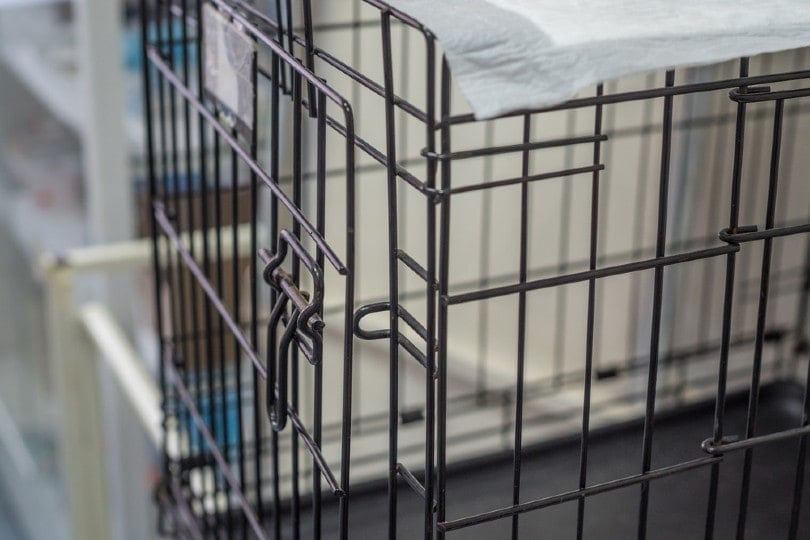
6. Never Use the Crate for Punishment
Because you want your Corgi to feel safe and content in their crate, you should never use it to punish bad behavior. Doing so could cause your puppy to form negative associations with the crate and make them reluctant to go inside.
You should also be cautious about using the crate as a “timeout” spot if your puppy is overly excited and needs to calm down. If you’re expecting house guests and know your puppy will be overstimulated, be proactive and put them in their crate ahead of time.

Why Should You Crate Train Your Corgi?
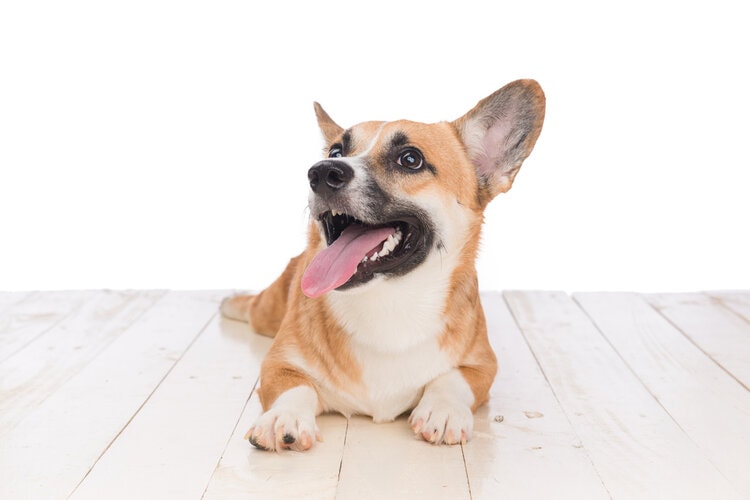
Some dog owners may worry that crating their Corgi is mean. However, if done correctly, crate training can be a helpful tool. Dogs like having a den-like space where they can rest safely, and a crate fulfills that need. Crate training also simplifies the house-breaking process. Corgis like to stay clean, and using the crate can help them learn to “hold it” until you take them outside.
Corgis can be quite talented at getting into mischief, especially as puppies. Crate training your Corgi gives you a safe way to keep them confined and away from trouble when you’re out of the house.
Remember, puppies younger than 6 months shouldn’t spend more than 3–4 hours at most in the crate. Adult dogs can last more like 6–8 hours but don’t leave them in the crate too long, and make sure they get plenty of attention and exercise when you are home.
Final Thoughts
Corgis are intelligent and eager to please, meaning they tend to pick up training quickly. By channeling their instincts and using these six tips, you can crate train your Corgi with as little hassle as possible. Although we used the example of crate training a puppy, these tips are also practical if you need to crate or house-train an adult Corgi.
Featured Image Credit: Jus_Ol, Shutterstock
Contents
- The 6 Tips on How to Crate Train a Corgi
- 1. Choose the Right Size Crate
- 2. Make The Crate Comfortable
- 3. Use Treats to Lure Your Corgi into the Crate
- 4. Teach Your Corgi a Command to Go to Their Crate
- 5. Close the Door…but Gradually
- 6. Never Use the Crate for Punishment
- Why Should You Crate Train Your Corgi?
- Final Thoughts

